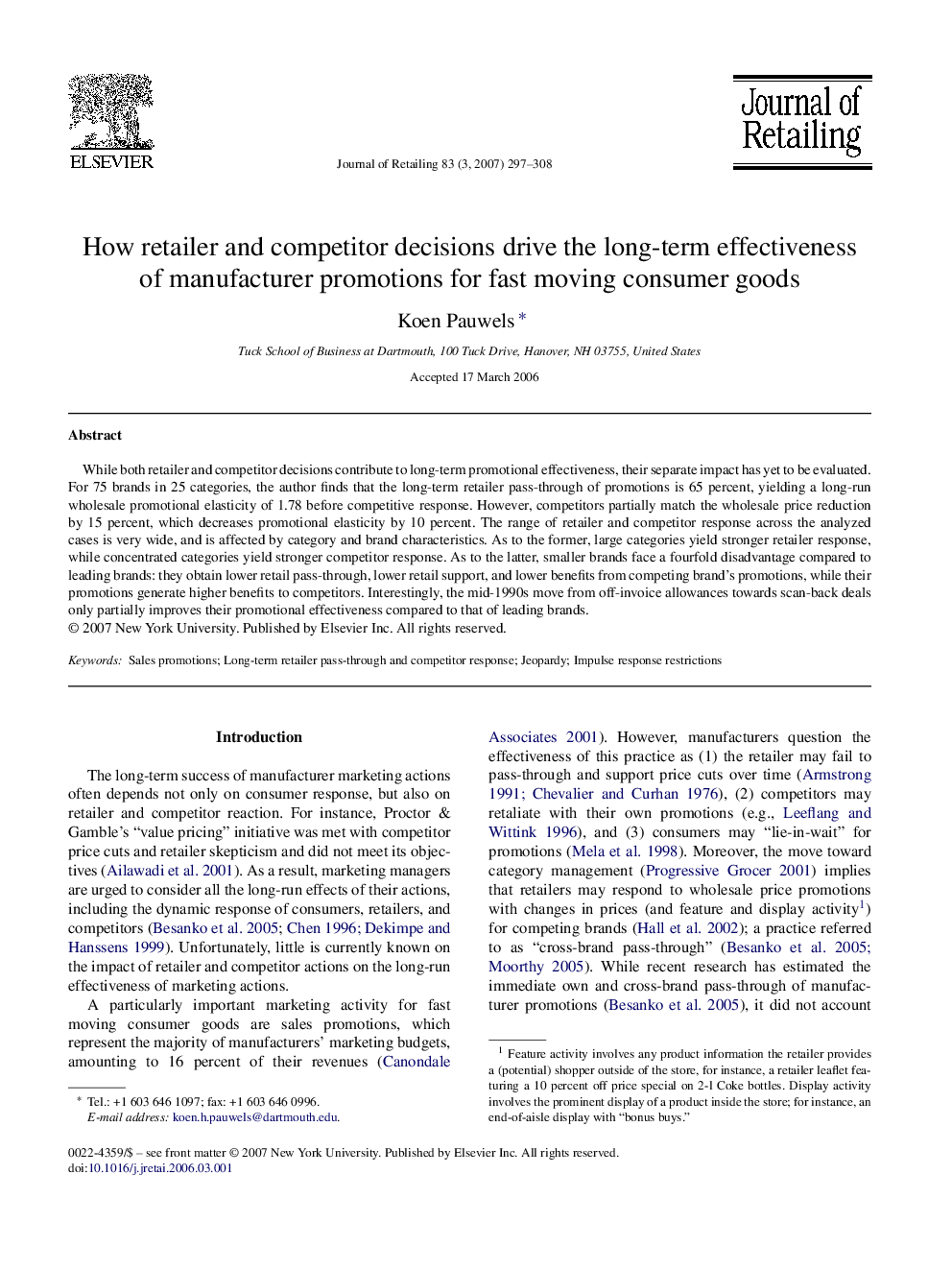| Article ID | Journal | Published Year | Pages | File Type |
|---|---|---|---|---|
| 886551 | Journal of Retailing | 2007 | 12 Pages |
While both retailer and competitor decisions contribute to long-term promotional effectiveness, their separate impact has yet to be evaluated. For 75 brands in 25 categories, the author finds that the long-term retailer pass-through of promotions is 65 percent, yielding a long-run wholesale promotional elasticity of 1.78 before competitive response. However, competitors partially match the wholesale price reduction by 15 percent, which decreases promotional elasticity by 10 percent. The range of retailer and competitor response across the analyzed cases is very wide, and is affected by category and brand characteristics. As to the former, large categories yield stronger retailer response, while concentrated categories yield stronger competitor response. As to the latter, smaller brands face a fourfold disadvantage compared to leading brands: they obtain lower retail pass-through, lower retail support, and lower benefits from competing brand's promotions, while their promotions generate higher benefits to competitors. Interestingly, the mid-1990s move from off-invoice allowances towards scan-back deals only partially improves their promotional effectiveness compared to that of leading brands.
